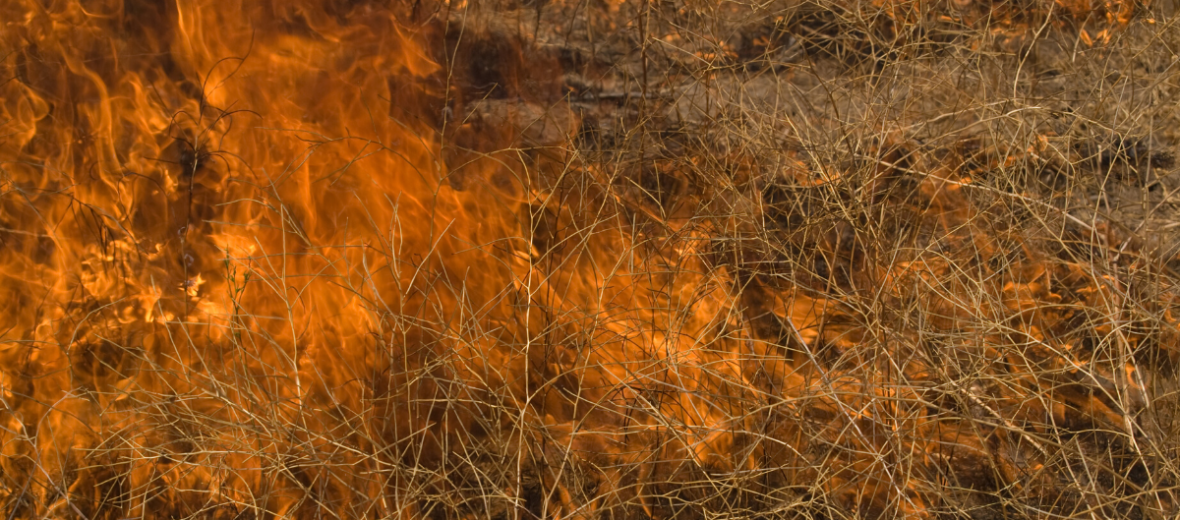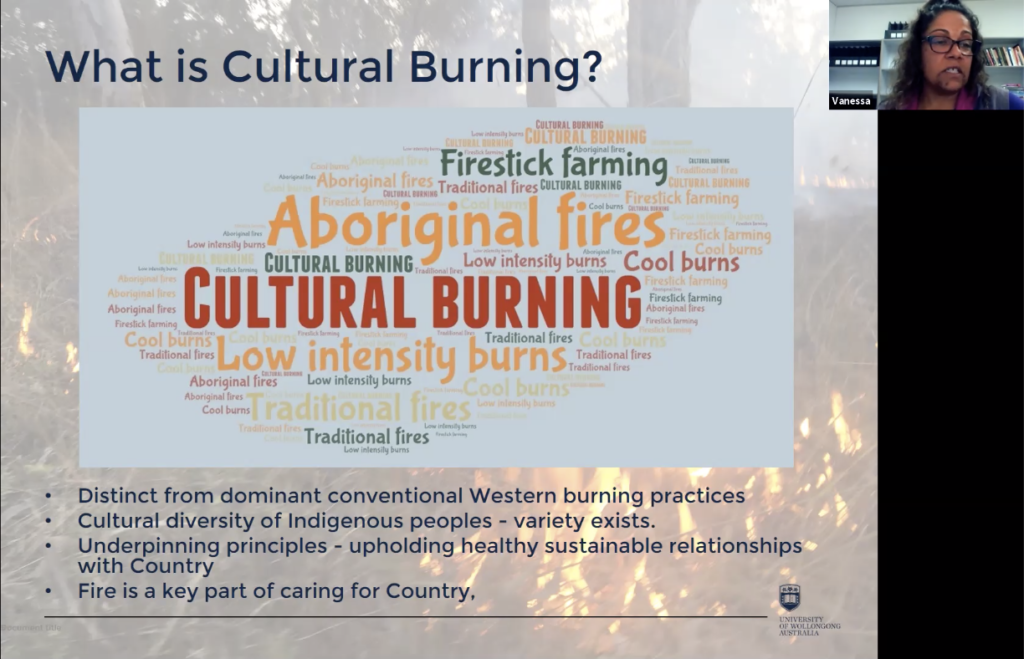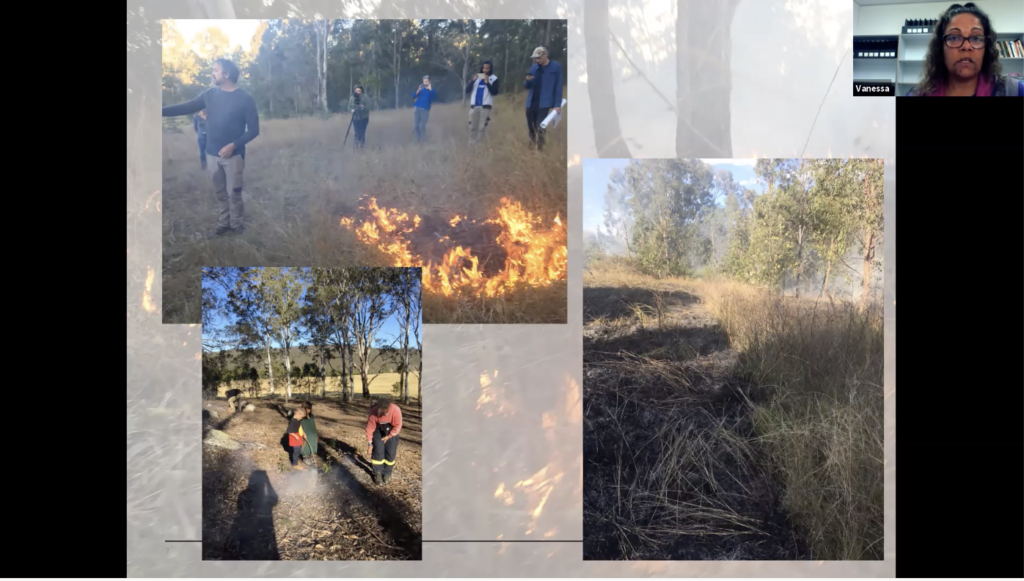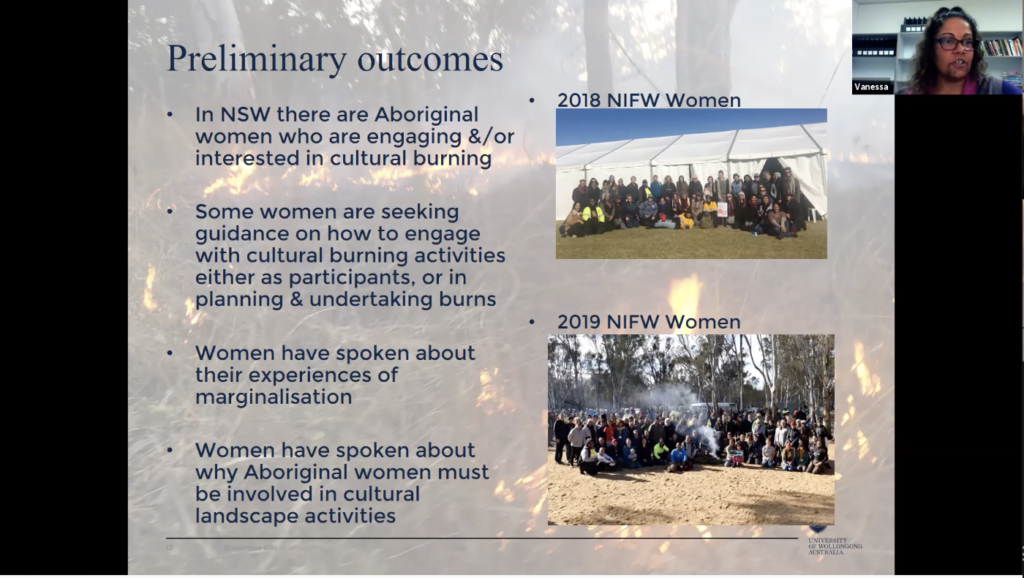
PyroLife International Symposium: Towards an Integrated Fire Management
Highlights from the sixth PyroLife Symposium webinar on July 08, 2020 by Rhea Shah.
Vanessa Cavanaugh is a member of the Bundjalung and Wonnarua First Nations and a PhD student at Wollongong University, studying the historical, current and aspirational role of aboriginal women in cultural burning practices. She presented at the Pyrolife Symposium contextualizing fire in Australia, sharing histories and experiences of cultural burning practices, distinguishing them from Western prescribed burning. She introduced the audience to the intimate nature of cultural burning ‘caring for Country’ amongst aboriginal communities in Australia.
An introduction to Cavanaugh’s work begins with understanding Country which refers to 100s of indigenous nations that are now known as Australia. Aboriginal cultures are founded on healthy respect for relationships of coexistence with the natural world which is sometimes called ‘caring for Country’. “ Caring for Country is about our relationship and sustainable existence with the planet, it is more than an ecological or biophysical exercise, it encompasses a whole range of factors… It is place based learning that enacts cultural responsibilities.”

Cultural burning (CB) is a part of Indigenous land management or ‘Caring for Country’. Cavanaugh refers to the Firesticks Alliance definition:
“The term ‘cultural burning’ describes burning practices developed by Aboriginal people to enhance the health of the land and its people. Cultural burning can include burning or prevention of burning of Country for the health of particular plants and animals, threatened species or biodiversity in general. It may involve patch burning to create different fire intervals across the landscape or it could be used for fuel and hazard reduction. Fire may be used to gain better access to Country, to clean up important pathways, maintain cultural responsibilities and as part of culture heritage management. It is a ceremony to welcome people to Country or it could also be as simple as a campfire around which people gather to share, learn, and celebrate.”
Landscape fire management, founded on western concepts, views fire negatively and focuses on suppression and control. Fire is used aggressively, ignition is quick – assisted with fuels, creating hot and fast fires with tall flames which burn the land entirely. Only adults with Western accreditations can participate in the extensively regulated prescribed burns.

In contrast Indigenous CB practices regard fire as a positive teaching entity with agency. In NSW, CB means cooperating with fire. Here fire moves slow, at walking pace, and is left to leave its own burn path, often leaving unburned patches as refuges for small animals during and after the fire. Fire temperatures and flame heights are low and children and elders actively participate.
Both practices understand fire as a potentially destructive force with an important role in risk reduction and preserving ecological diversity. Before colonization aboriginal women were active in CB practices. While CB is being revived in NSW, many programs and activities are dominated by men. Vanessa’s research studies the voices and roles of indiegenous women in CB and the intersectional challenges they face. Her research finds that CB allows indigenous people access to previously restricted parts of the country, opening up conversations and forms of reconciliation. CB can lead to a healthier country and the protection of aboriginal sites and culture while facilitating inter-generational knowledge exchange. CB can also change the way fire is perceived and interacted with.

Participating in CB practices allows women to preserve their role as teachers, pass knowledge to their children, as they participate, and preserve traditionally female spaces – reinforcing matriarchal aboriginal tradition.
“Country is sick, which is reflected in making our people sick.. So burning at the right time makes sure the country is healthy, that the waterways are healthy, the plants and animals are healthy and that people will be healthy too.” To those interested in cultural burning, she says, ‘You first need to be able to listen. And support women as equal decision makers and knowledge holders and that needs to happen over the long term with secure resourcing for women’s roles.’




Leave a Reply